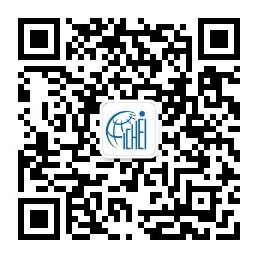Industry Demand-Driven: South Korea's AI Talent Development Policies and Practices
| To address challenges such as the outflow of AI talent and the widening technological gap, South Korea has adopted a proactive policy framework. By building an open legal and policy environment, aligning initiatives with local industrial needs, and flexibly reallocating higher education resources, the country is fostering an innovation ecosystem based on "industry–education integration". These policy measures jointly promote the cultivation, retention, and value realisation of AI talent, driving the intelligent upgrading of key industries and offering a distinctive model for global higher education–industry integration. |
Retaining AI Talent
As a globally recognised technological leader, South Korea has long been at the forefront of science and innovation. Yet in recent years, it has faced a serious problem: the outflow of artificial intelligence (AI) talent. In 2024, South Korea ranked only 35th among the 38 OECD member states in AI talent retention, with a net loss of 0.36 AI specialists per 10,000 people.[1] The United States and the United Kingdom are the main destinations, attracting nearly 40% of Korean AI graduate students for employment.[2] This talent drain has had a tangible impact on Korea's share of the global AI talent pool. According to Stanford University's Artificial Intelligence Index Report 2024, South Korea's AI talent concentration in 2023 was only half of what it was in 2016.[8] The underlying reasons include the relatively limited competitiveness of Korean universities in frontier AI research, less attractive salaries and opportunities compared to global standards,[3] a weaker AI industrial ecosystem, and insufficient investment.

To counter these challenges, South Korea has adopted an "industry demand–driven" strategy aimed at cultivating and attracting professionals who can be deeply embedded in core domestic industries and enhance their competitiveness. Top-level initiatives such as the AI Strategy for Realising I-Korea 4.0 and the Smart Factory Plan 2033 designate AI as a key driver for the transformation and upgrading of manufacturing, semiconductors, and carbon neutrality–related industries.[4] This approach explicitly requires AI development and talent training to revolve around industrial needs, focusing on solving practical problems rather than competing in the global race for generic technologies. As a result, South Korea' s higher education seeks to nurture individuals who are not only technically proficient but also possess strong industry knowledge and humanistic literacy. These individuals are expected to take root in front-line sectors such as semiconductors, automobiles, shipbuilding, and digital healthcare, driving technological innovation and practical applications. Ultimately, they form the backbone of South Korea' s strategy to consolidate its position in the global technological competition. South Korea's AI policies and educational investments are thus designed to systematically cultivate and attract this kind of talent.
Policy Framework
A forward-looking legislative system lies at the core of South Korea' s policy approach. In recent years, the country has established a top-down AI governance framework through the AI Basic Act and the Presidential National AI Committee. The AI Basic Act integrates principles such as privacy protection and bias regulation into legislation, laying an ethical foundation for AI development. More significantly, the Framework Act on the Development of Artificial Intelligence and Establishment of a Foundation of Trust (hereafter the AI Framework Act), passed in 2024 and set to take effect in January 2026, makes South Korea the world' s second jurisdiction to introduce a comprehensive AI law after the European Union (EU).[5]
The AI Framework Act functions both as a regulatory measure and a carefully crafted industrial policy tool designed to create a predictable and innovation-friendly environment. Its core aim is to balance technological advancement with the protection of citizens' rights. By adopting a risk-based classification approach, it places stricter oversight on high-impact AI and Generative AI, while applying more flexible rules to other AI systems to lower barriers to innovation. High-impact AI refers to systems that may significantly affect human life, safety, or fundamental rights, such as those in healthcare, energy, public services, and law enforcement. Importantly, the Act avoids outright bans on AI practices, reflecting the government' s pro-innovation stance. Its enforcement mechanisms are also relatively moderate, emphasising compliance guidance rather than punishments. This design offers innovators legal certainty and stability, positioning South Korea as an increasingly attractive hub for AI research and development.[5] The message to the global AI community is clear: Korea is open for business, equipped with transparent and reasonable rules, and committed to fostering the integration of innovation and education.
Beyond legislation, South Korea has also rolled out a series of talent cultivation policies, positioning higher education as a "national strategic innovation engine". Comprehensive Plan to Nurture Digital Talent released in 2022 explicitly stated: "Universities will be restructured as frontier bases for nurturing advanced digital talent, ensuring the nation achieves global leadership in digital technologies amid intensifying geopolitical competition".[6] In December 2023, the 5th Science and Technology Basic Plan (2023~2027) incorporated this goal into the national science and technology strategy, designating 12 strategic technologies, including AI and semiconductors, as mandatory priorities for universities.[7] Official documents outline a three-tier AI competency framework for higher education, namely basic, advanced, and expert, ranging from introductory programming to chip-level AI design. This framework is supplemented by ethics courses and supported by the planned digital transformation of four key domains: classrooms, laboratories, faculty, and credits, by 2027.
Resource-Driven Development
One of the defining features of South Korea' s integration of higher education and AI is the construction of regional ecosystems that emphasise local distinctiveness rather than centralised breakthroughs. For example, regional innovation hubs such as Robotics in Daegu and Convergence AI in Honam, are designed to strengthen AI research capacity at the local level. To ensure precise implementation of national policies, the Ministry of Education has launched two key initiatives that channel talent and innovation resources into regional industrial clusters.
The first is the "Glocal University 30" programme, which will invest up to KRW 3 trillion over the next five years in 30 universities outside the capital region. The aim is to transform these institutions into engines of local economic growth. Funding is contingent on universities embedding themselves within regional industries and communities, addressing practical development challenges. For instance, Dongseo University partnered with Chinese universities to establish courses in AI-based digital imaging and smart media, directly aligned with the needs of the local digital content industry. This ensures that AI education remains rooted in regional economic characteristics and delivers tangible outcomes.
The second is the "Regional Innovation System and Education" (RISE) initiative, which devolves more than 50% of university funding authority (over KRW 2 trillion annually) to local governments, granting them autonomy to tailor university research and talent training to regional industrial needs. This reform deepens interactions between local universities and industries, ensuring AI technology serves regional development priorities. For example, Daegu has prioritised the D5 industries (AI, big data, semiconductors, etc.), with Kyungpook National University becoming a major beneficiary, receiving KRW 5.7 billion annually in full-cycle R&D support to advance research at the intersection of AI, healthcare, and semiconductors.
University–Industry Collaboration
Public–Private Partnerships (PPP) further energise South Korea' s higher education and AI ecosystem by bringing together technology firms, telecommunications companies, and public institutions to jointly advance infrastructure and AI-driven innovation. Guided by policy, regional universities are forging deep cooperations with local corporate champions to cultivate AI professionals who match industry needs, ensuring close alignment between education and the labor market.
A prime example is the development of "Contract-based Departments", which provide systematic, targeted training that exposes students directly to real-world industry challenges. Dankook University, for instance, has partnered with firms in South Chungcheong Province to create customised AI programmes in carbon neutrality and bio-convergence, enabling students to train around the actual requirements of their future employers. More commonly, joint university–industry laboratories and departments integrate resources from both sides to focus on cutting-edge R&D and product development. Sungkyunkwan University' s Semiconductor and Display Engineering Department, established with Samsung Electronics, has become a vital training ground for high-end semiconductor talent. Likewise, Seoul National University' s collaboration with Samsung Heavy Industries in AI-driven shipbuilding aims to cultivate engineers capable of driving the digital transformation of traditional industries, injecting new vitality into Korea’s industrial base.
Global Talent Attraction
In responding to the transformation brought by AI, South Korea' s higher education system does not only focus domestically but also looks outward, positioning itself as a destination for global talent. To infuse fresh vitality into its AI ecosystem, South Korea launched the "Global AI Challenge" and expanded the "AI Frontier Labs", offering platforms for outstanding AI professionals worldwide to showcase their innovations. These initiatives reflect a core belief: in the AI race, the decisive factor is not merely technological investment, but the ability to attract individuals who continuously push the boundaries of innovation. Through such efforts, South Korea is steadily becoming one of the most attractive destinations for AI professionals and researchers, building bridges between its domestic industries and international innovation networks.
Conclusion
South Korea' s policy framework broadens our understanding of how education can drive AI innovation. It extends far beyond the combination of technology and curricula, but evolving into a deeper dialogue between industry, talent, and the future. With a forward-looking legislative framework, flexible allocation of educational resources, and an innovation ecosystem rooted in industry–education collaboration, South Korea has carved out a distinctive path of smart factory development and industrial upgrading. Against the backdrop of fierce global competition, rising demand for AI literacy, and the urgent need for future-critical skills, South Korea' s experience provokes reflection: How can policy design and resource integration help retain innovative talent? How can education serve as the engine of industrial transformation? These are questions whose answers may emerge through practice and experimentation, and South Korea' s model offers valuable insights along the way.
References:
[1] M. Joon-hyun, "S. Korea suffers OECD's 4th-biggest AI brain drain - The Korea Herald," The Korea Herald, Jun. 19, 2025. https://www.koreaherald.com/article/10513263 (accessed Aug. 21, 2025).
[2] MacroPolo, "The Global AI Talent Tracker 2.0 - MacroPolo," MacroPolo, Mar. 06, 2024. https://archivemacropolo.org/interactive/digital-projects/the-global-ai-talent-tracker/
[3] K.S. Song, "2025 High-Level Policy Dialogue in East Asia: Fostering an AI-Enabled Higher Education Ecosystem," [Presentation], 2025.
[4] 高楠, “韩国加大对人工智能领域资助力度,” Las.ac.cn, 2023. https://www.las.ac.cn/front/product/detail?id=295d4b9ed35248ed655a17ed849a16ea (accessed Aug. 21, 2025).
[5] S. Shivhare & K. B. Park. "South Korea's New AI Framework Act: A Balancing Act Between Innovation and Regulation," Future of Privacy Forum, 2025. https://fpf.org/blog/south-koreas-new-ai-framework-act-a-balancing-act-between-innovation-and-regulation/
[6] 中国科学院科技科技战略咨询研究院, “韩国制定《数字化人才培养综合方案》,” Casisd.cas.cn, 2022. http://www.casisd.cas.cn/zkcg/ydkb/kjzcyzxkb/2022/zczxkb202210/202301/t20230109_6597753.html (accessed Aug. 21, 2025).
[7] 中国科学院科技科技战略咨询研究院, “韩国发布《第5次科学技术基本计划(2023-2027)》,” Casisd.cas.cn, 2023. https://casisd.cas.cn/zkcg/ydkb/kjzcyzxkb/2023/zczxkb202303/202304/t20230427_6746684.html (accessed Aug. 21, 2025).
[8] HAI, “AI Index | Stanford HAI,” Stanford.edu, 2025. https://hai.stanford.edu/ai-index (accessed Aug. 25, 2025).




